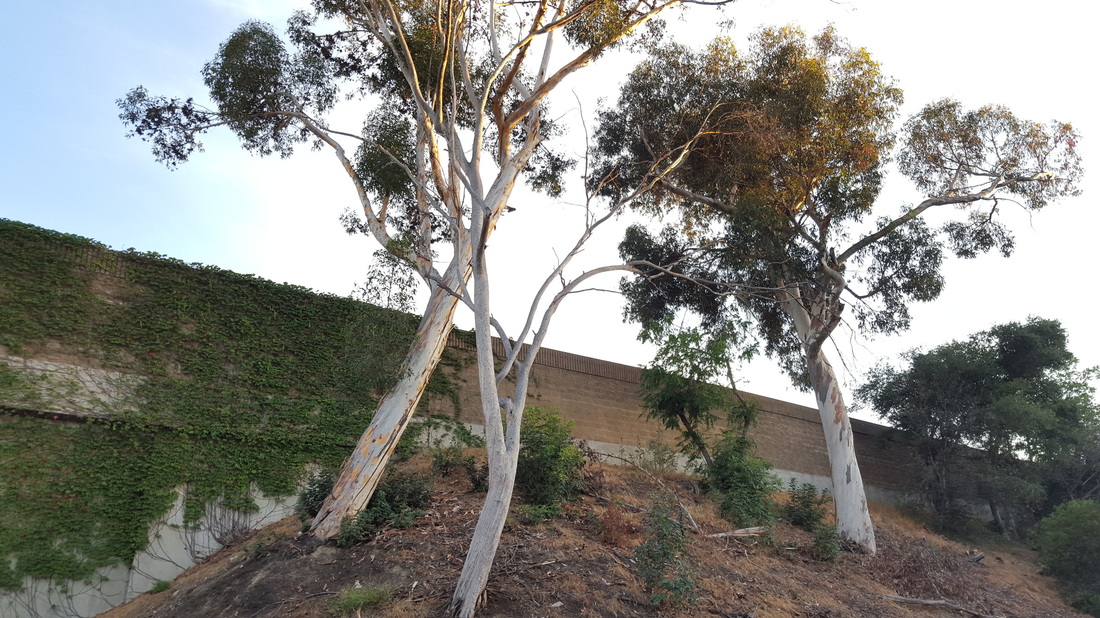 Eucalyptus trees along the freeway.
Eucalyptus trees along the freeway. Driving through Southern California, it's hard to miss the plethora of trees that zoom by on the side of the road. It's a little bit easier, though, not to notice just exactly how many of those trees are alien invaders. In fact, most of our decorative trees used in parks and around houses are non-native ornamental trees. One recognizable example of these foreign trees is the genus Eucalyptus. These are the tall, evergreen trees that can usually be seen on the side of the freeway or scattered throughout neighborhoods. Eucalyptus trees have a long history in California, first being planted in 1856, to fulfill the shade-desiring inhabitants of the tree-starved landscape. They grew hardily and fast, supposedly up to 40 feet in 6 years, not hindered by any of their natural pests.
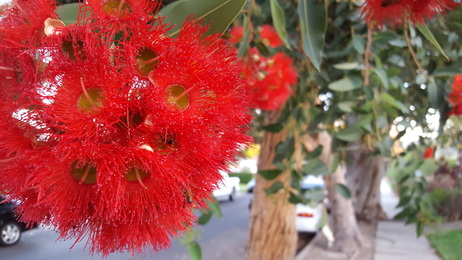 Some Eucalyptus flowers
Some Eucalyptus flowers These primarily Australian trees are often known as "gum trees" because of the sticky "gum" that they release when damaged. They can also be distinguished by their bark, which can often be pulled off in long strips and flakes, and by their distinctive flowers and fruits. There are about 600 species in the Eucalyptus genus and they can all be distinguished by these features.
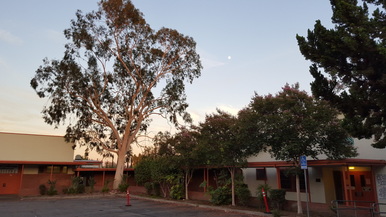 One of the Eucalyptus trees that we spotted during our trip.
One of the Eucalyptus trees that we spotted during our trip. Unfortunately for these Californian trees, they are no longer a stranger to their native pests. One of the prettiest examples is the Eucalyptus tortoise beetle. It made its way from down-under to Riverside County at some point pre-1998. Although these beetles can cause obvious feeding damage in the form of bites taken out of leaves, they haven't been known to kill or even particularly harm healthy trees. Another conspicuous Eucalyptus pest is the Redgum lerp psyllid. Immature stages of this psyllid forms white cone-shaped protective covering called lerps which can cause leaves to look unsightly although this pest by itself isn't enough to cause severe problems for trees. Some of the worst pests are the two species of Eucalyptus long-horned borer beetle that can take down entire trees, though biological control has been largely effective in reducing the numbers of at least one species.
While these are a few of the commonly seen pests on the trees, there are many more reported species to count. In fact, there have been so many over the last 25 years, (16 new species to be exact) that Dr. Timothy Paine, an entomologist here at UCR, believes that there may be something more going on. He believes that a group of people or single person could be committing biological terrorism, bringing Eucalyptus pests from Australia in order to target and eliminate our large non-native Eucalyptus populations. While he does not have concrete proof for his theory, he believes that it is too much of a coincidence that these pests entered California "a few at a time in batches from different regions down under."
There might soon be one another to add on to the list. Back on June 10, the following photos were posted to bugguide.com by junkyardsparkle.
We stumbled on this set of photos and immediately recognized it as a member of one of a pretty amazing looking family of true bugs, Thaumastocoridae. This family is characterized by the large mandibular plates that project out in front of it's face. Thaumastocoridae are one of three families of herbivorous bugs in the group that also contains assassin bugs and bed bugs in a superfamily Miroidea, which also contains the mostly herbivorous plant bugs and the totally herbivorous lace bugs. Unfortunately, this particular species (Thaumastocoris peregrinus) is notorious for being an invasive pest of Eucalyptus in much of the world and has been called the bronze bug, presumably both for its color and for the side effects it can have on unlucky Eucalyptus trees.
Once we realized the problem we might have at hand, we immediately started planning a trip to investigate whether this pest has already set up a stable breeding population. We contacted the user junkyardsparkle (Joel Brandt), who posted the pictures on bugguide, and he kindly provided us with photos of many of the neighborhood Eucalyptus which we used to create the map below.
Once we realized the problem we might have at hand, we immediately started planning a trip to investigate whether this pest has already set up a stable breeding population. We contacted the user junkyardsparkle (Joel Brandt), who posted the pictures on bugguide, and he kindly provided us with photos of many of the neighborhood Eucalyptus which we used to create the map below.
As we drove from Riverside to North Hollywood, we discussed what we planned to do. When we finally arrived and met up with Joel, we began walking through the neighborhoods, trying to see if we could find the bronze bug on any of the numerous Eucalyptus trees in sight. We targeted every single tree on our map, even surreptitiously crossing a gate with a broken lock to find a way to investigate the uncared-for trees that are located in government property immediately next to the freeway. While we found many of the other Eucalyptus pests, we had no luck with the bronze bug. Finally, feeling defeated after a long day of searching and walking in the hot sun not to mention swing around a 20-foot net, we walked back to Joel's apartment complex, where to our surprise, we found a different species of Eucalyptus tree that we had not seen all day. These trees happened to be right underneath the window where the insect was originally spotted, but both we and Joel had originally overlooked them because they looked quite a bit different from a regular Eucalyptus at a first glance. We tried collecting from every single tree in his complex, particularly targeting the one right underneath his window. Unfortunately, still no luck. We decided to call it a day, but before we left we placed sticky traps on several branches of the tree, around the window where the insect was seen, and on the fence near the trees in the hope that we would capture a specimen even after we left. Joel agreed to keep an eye out on the sticky traps for us and let us know if he saw anything else.
Although we weren't able to recollect any specimens, we suspect there are likely bugs still out there! We are writing this blog post in part to call attention to this potential problem! Be on the lookout, especially if you happen to have a Eucalyptus tree nearby, and contact someone if you see one. Recognizing a pest early can lead to an effective quarantine that ensures the pest does not spread through the whole state of California. Feel free to spread the flyer below!
Authored by Anna Georgieva and Eric Gordon.
Anna Georgieva is about to enter her Junior year at University of California, Riverside. She has been working in the Weirauch lab since the fall of 2014 on identifying the hosts of kissing bugs through molecular gut content analysis and has recently started a project on Thaumastocoris peregrinus.
Eric Gordon is a graduate student at University of California, Riverside who works on the evolution of Heteroptera and their bacterial symbionts.
Many thanks to Joel Brandt for his original sighting of the bug and for most of the photos of Eucalyptus and those of Thaumastocoris.
References:
Pests in Gardens and Landscapes
J. G. Millar, T. D. Paine, J. A. Bethke, R. W. Garrison, K. A. Campbell, S. H. Dreistadt, UC Statewide IPM
Produced by UC Statewide IPM Program, University of California, Davis, CA 95616
http://ipm.ucanr.edu/PMG/PESTNOTES/pn74104.html
Is California Eucalyptus the Target of Biological Terrorism?
J. E. Warnert
http://ucanr.edu/blogs/blogcore/postdetail.cfm?postnum=7981
Invasive Pests, or Tiny Biological Terrorists?
National Public Radio
http://wutc.org/post/invasive-pests-or-tiny-biological-terrorists#stream/0
Ubiquitous Eucalyptus How an Aussie Got Naturalized
Bill O'Brien
http://baynature.org/article/ubiquitous-eucalyptus/
Pests in Gardens and Landscapes
J. G. Millar, T. D. Paine, J. A. Bethke, R. W. Garrison, K. A. Campbell, S. H. Dreistadt, UC Statewide IPM
Produced by UC Statewide IPM Program, University of California, Davis, CA 95616
http://ipm.ucanr.edu/PMG/PESTNOTES/pn74104.html
Is California Eucalyptus the Target of Biological Terrorism?
J. E. Warnert
http://ucanr.edu/blogs/blogcore/postdetail.cfm?postnum=7981
Invasive Pests, or Tiny Biological Terrorists?
National Public Radio
http://wutc.org/post/invasive-pests-or-tiny-biological-terrorists#stream/0
Ubiquitous Eucalyptus How an Aussie Got Naturalized
Bill O'Brien
http://baynature.org/article/ubiquitous-eucalyptus/
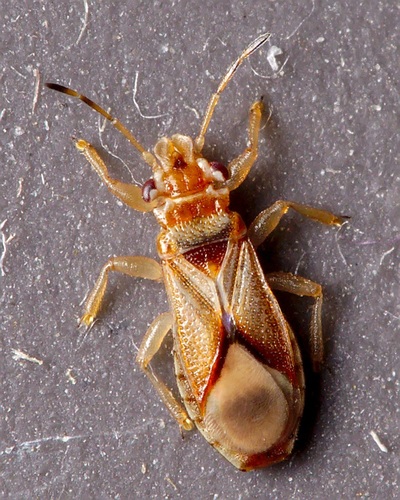
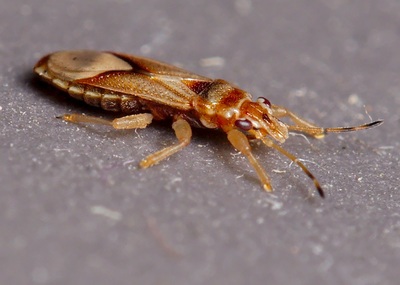
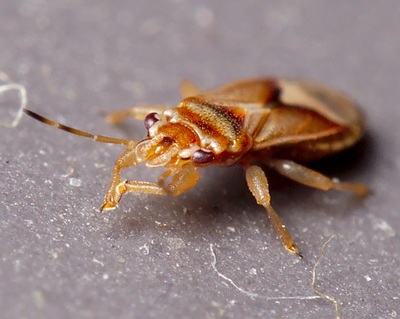

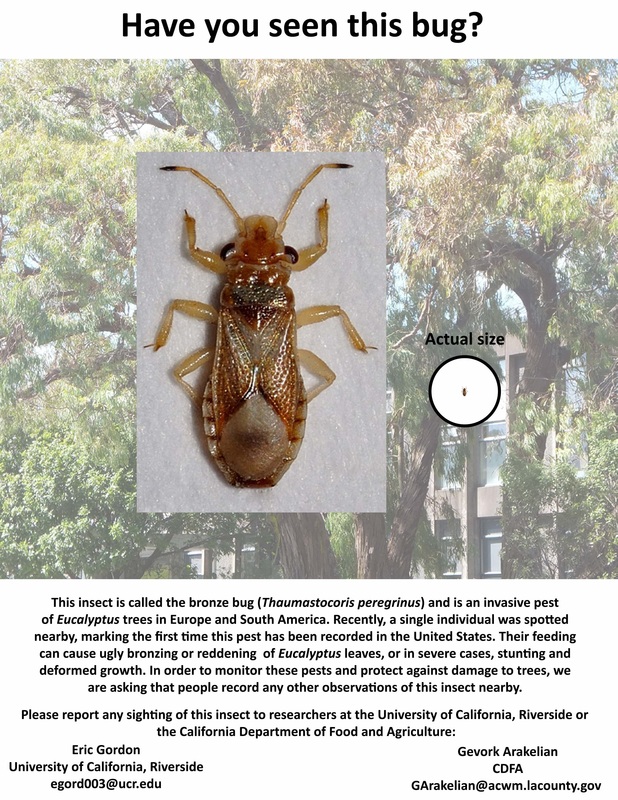
 RSS Feed
RSS Feed
